Understanding the Navadurga through the spiritual canvas of Bapu's Bhav-vishwa (devotional realm) - Part 10
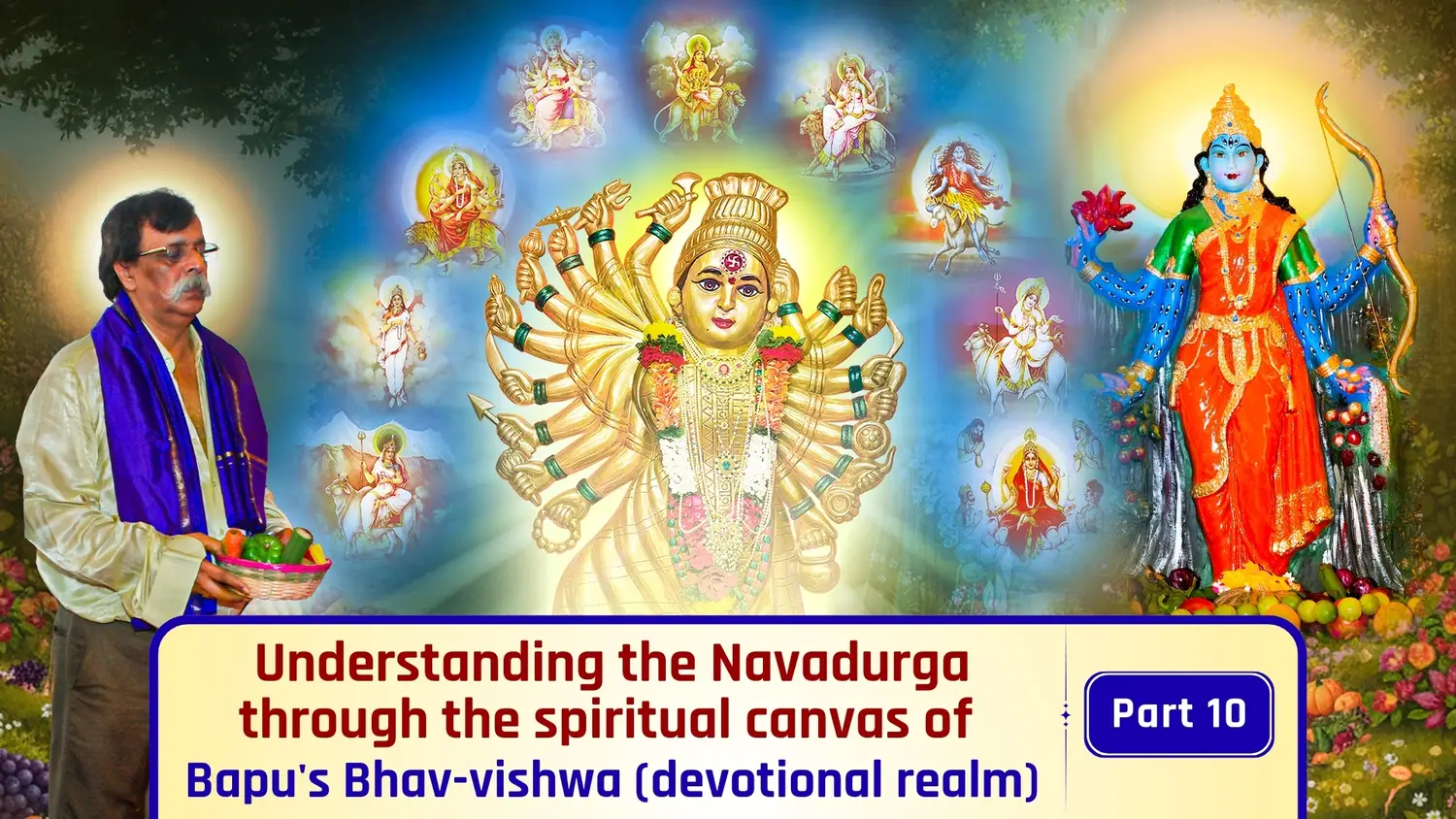
हिंदी मराठी ગુજરાતી বাংলা తెలుగు ಕನ್ನಡ മലയാളം தமிழ்
Reference: From the editorials numbered 1398 and 1399 in the Tulsipatra series of the daily ‘Pratyaksha’ by Sadguru Shree Aniruddha Bapu.
In Tulsipatra – 1398, Sadguru Shree Aniruddha Bapu writes:
After clearly understanding the entire description of the Shree Shambhavi Mudra and the cautions related to it, all the Shivaganas, the young Rishis, the Rishis, and even the Maharshis conferred among themselves and then requested the senior Brahmavadini, Lopamudra: “O foremost Brahmavadini, we feel a strong desire to know more about the Shree Shambhavi Mudra, about the eighth Navadurga, Mahagauri, and about the eight-petaled white flowers she has given us. The fragrance of this white flower that has adhered permanently to our hands only intensifies our longing. Please bless us.”
With the permission of Mahagauri and the Adimata, Lopamudra began to speak: “Yes, your curiosity is indeed growing because of that white flower. The eighth Navadurga, Mahagauri, nourishes and elevates the curiosity of Shraddhavans and noble people in every field—spiritual, scientific, artistic, commercial, artisanal, national defense and protection of Dharma, and worldly life—guiding it along the right path and in the right sequence.
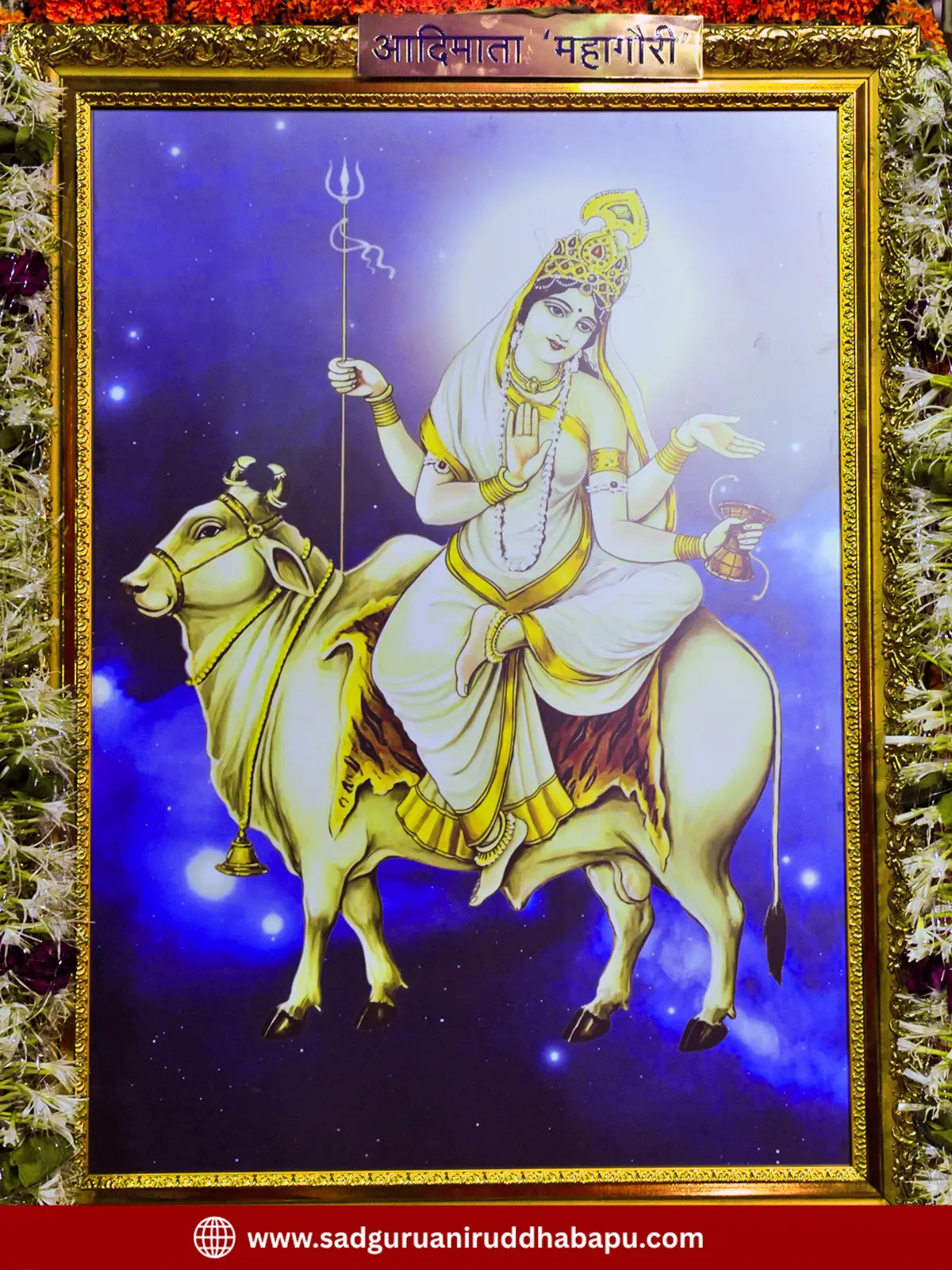
For it is in this very form as Mahagauri that, through the direct anointment by ParamShiva with the waters of the seventh Ganga upon her own body, Ganapati was born. He is the Ghanapran(lifeforce) of the universe, the giver of intellect, the bestower of light, and the remover of obstacles. Then will not Mahagauri, who is his mother, arrange that her devotees, meaning the Shraddhavans, receive all boons from Ganapati? Therefore, she both creates good and useful curiosity in the minds of Shraddhavans and also brings it to fulfillment.
Dear ones, because this single Parvati in her Ashtami form, Mahagauri works in this way, the Ashtami tithi (the eight day and night) of Navaratri is renowned everywhere for its special importance. In most places and regions, homa, havan, yajan and yadnya are performed on Navaratri Ashtami for this very reason: in Parvati’s life-journey, this stage or form of Mahagauri is one with the seven forms that preceded it and also one with the ninth form that follows it. Therefore, the havan performed on Ashtami reaches all nine Navadurgas equally. Moreover, Mahagauri herself manifested on the bright Ashtami of Ashwin.
On Ashtami, the homa, worship, joyous celebrations, devotional dances (such as garba), staying awake at night, the recitation of Matrvatsalyavindanam, and the listening to and chanting of the praises and glories of the work and attributes of the Mother(Matrvatsalya Upanishad) are all especially dear to the Adimata and to all nine Navadurgas. Indeed, the bright Ashtami of Ashwin is a great boon for all Shraddhavans. By the worship performed during this Navaratri, all nine Navadurgas become helpers to the devotees, while Mahagauri and Skandamata, along with their sons, continue to project their blessing-filled vibrations throughout the Shraddhavan’s home for the entire year.
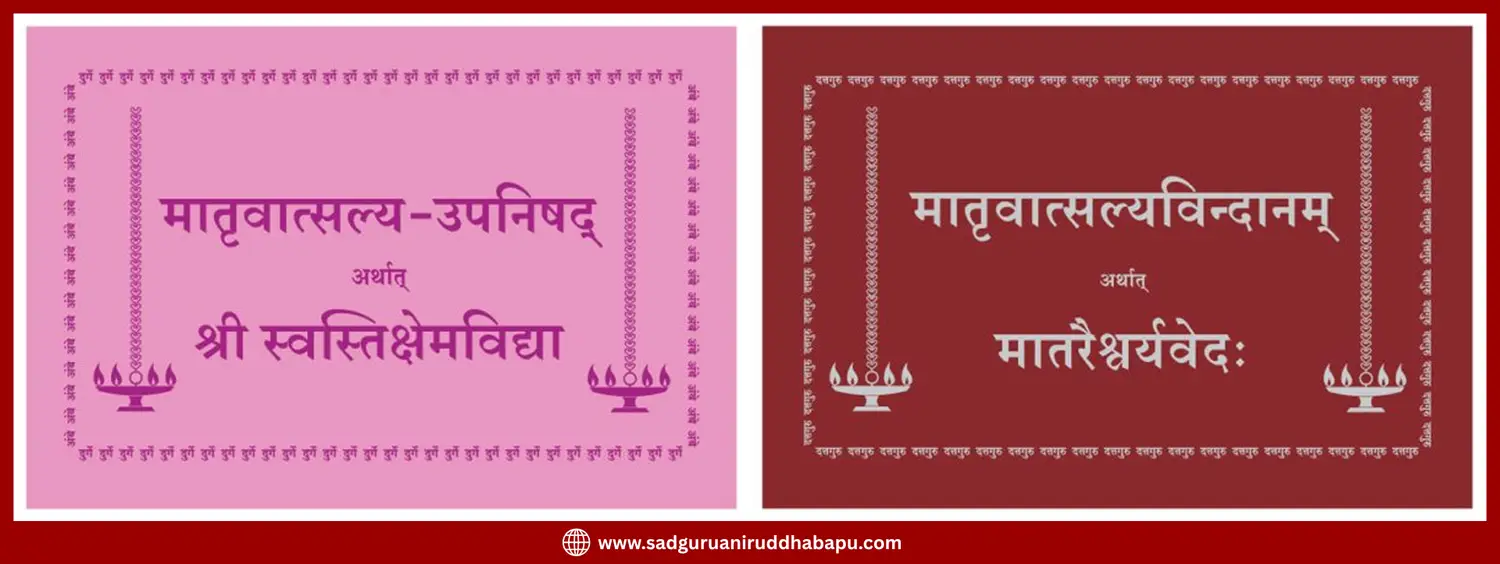
Hence, every devotee should, according to one’s capacity, celebrate both the Ashwin Navaratri and the Chaitra Navaratri, these two supremely holy festivals with love, faith, and joyfully.
O Shraddhavans, the one who regularly recites with faith the Matrvatsalyavindanam and the Matrvatsalya Upanishad, and completes the parayan of one text in each Navaratri, is awarded this white flower by Mahagauri every eight years. And once the white flower adheres to the Shradddhavan’s hand, it is forever. In truth, that white flower adheres to the Shraddhavan’s Lingadeha, and therefore in none of his births does that flower ever separate from him.
Now the question: why is this flower specifically eight-petaled? The answer was already given by the Mother in her Shakambhari Shatakshi incarnation: whether a person engages in worldly life, spiritual life, or both—every undertaking requires food, water, and air at the physical, pranik, and mansik levels. The food, water, and air required by the threefold body of the human being come from the Adimata’s eightfold nature, and this white eight-petaled flower is the boon of that very eightfold nature, white, that is, completely pure and holy.”
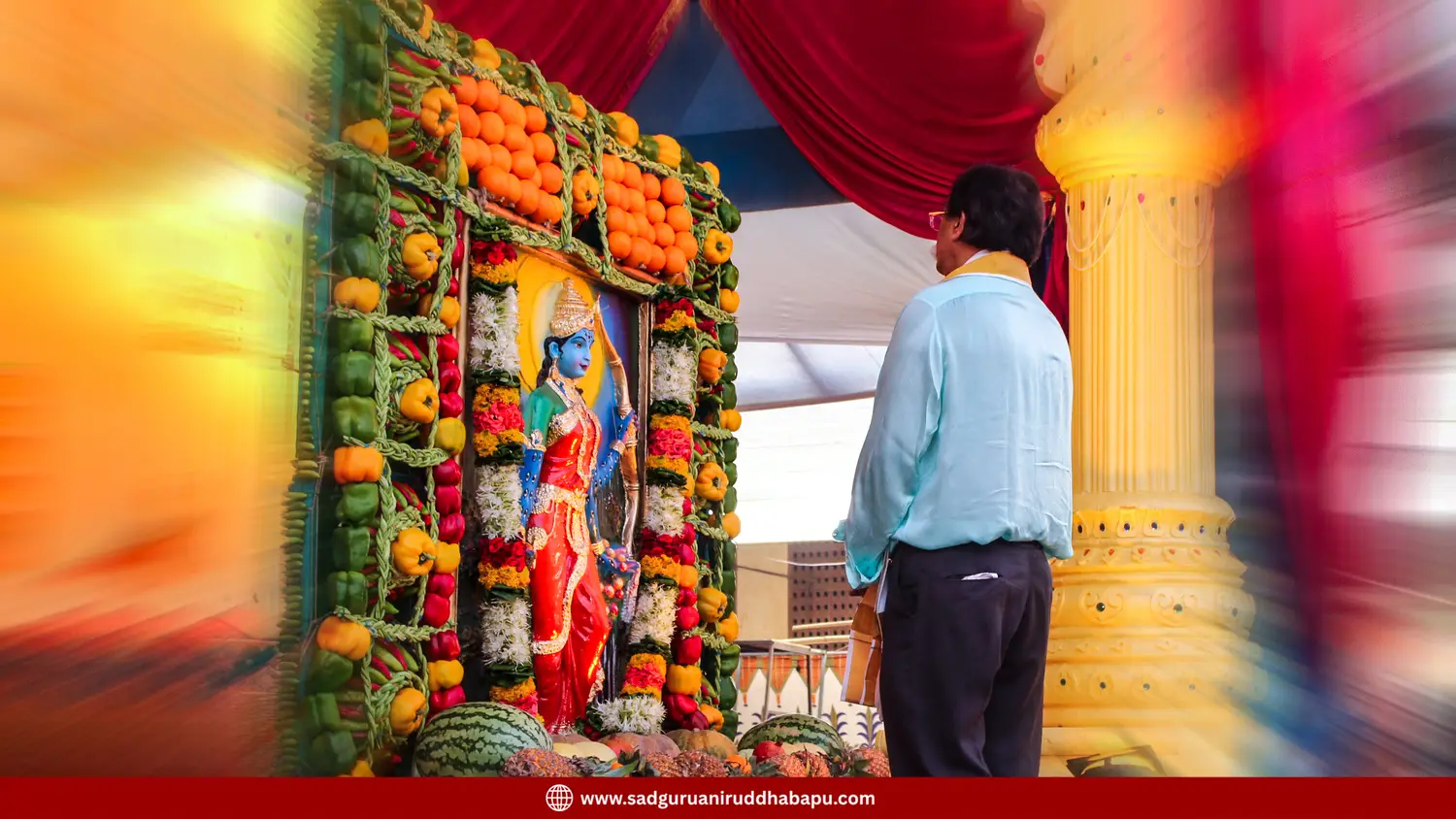
In Tulsipatra – 1399, Sadguru Shree Aniruddha Bapu writes:
After explaining to the devotees the glory of Ashtami in the Navaratri and the meaning of the white eight-petaled flower granted by Mahagauri, Brahmavadini Lopamudra, with the permission of the Adimata, requested all the Brahmarshis and Brahmavadinis present to demonstrate the Shree Shambhavi Mudra in small groups to those assembled there.
Each Brahmarshi and Brahmavadini took charge of a group and sat at different places. Who should go to whom, and where each should sit, was indicated by Sadguru Trivikram himself. As soon as each Shivagana and each group of sages reached their assigned spot and sat down, they felt as if they were swimming in an ocean of wonder and amazement. The reason was clear that beside each group of Brahmarshi and Brahmavadini, a river of the Ganga was flowing. Behind the seat of every teacher stood a flourishing bilva tree. And most striking of all, every group could also see the other groups.
So many Gangas! So many bilva trees! Where to look first?
No group was assigned to Brahmavadini Lopamudra; she was to remain as guide. With deep humility, Lopamudra stood near the lotus feet of the Adimata Shreevidya and addressed everyone: “O beloved devotees present here, you have seen everything and you have marveled at it. From this moment, keep your attention only on the Sadguru of your own group. Today, your Gurus will not confer the Shree Shambhavi Mudra upon you; they will only demonstrate it before you.”
As instructed by Lopamudra, everyone focused solely on their own Guru. Each Brahmarshi and Brahmavadini, in other words, each ‘Brahma-Guru’ sat steady in the Padmasana (lotus posture). First, with folded hands, they prayed to Dattaguru and to the Adimata, then they closed their eyes. There was no other movement at all, not even of the eyelids or the nostrils. Because of this, no one sitting in front could see what was happening behind those closed lids.
But how could such a limitation exist on Kailash, and that too in the presence of the Primordial Mother and Trivikram? It could not. Bhagwan Trivikram instructed Lopamudra to sprinkle the eyelids of each Brahma-Guru with the waters of the Ganga flowing beside that group. Instantly, though everyone still saw only the teachers’ closed eyelids, they also began to see clearly the movement of the eyes behind those lids.
The eyes of every Brahma-Guru were focused on the midpoint equidistant from the two eyebrows. From their eyes flowed a most pure and holy feeling toward the Adnya chakra like a gentle, soft current of subtle energy. At the same time, the Adnya chakra of each teacher brimmed over with a uniquely beautiful radiance, and from that center a most wondrous stream flowed back into the teachers’ eyes.
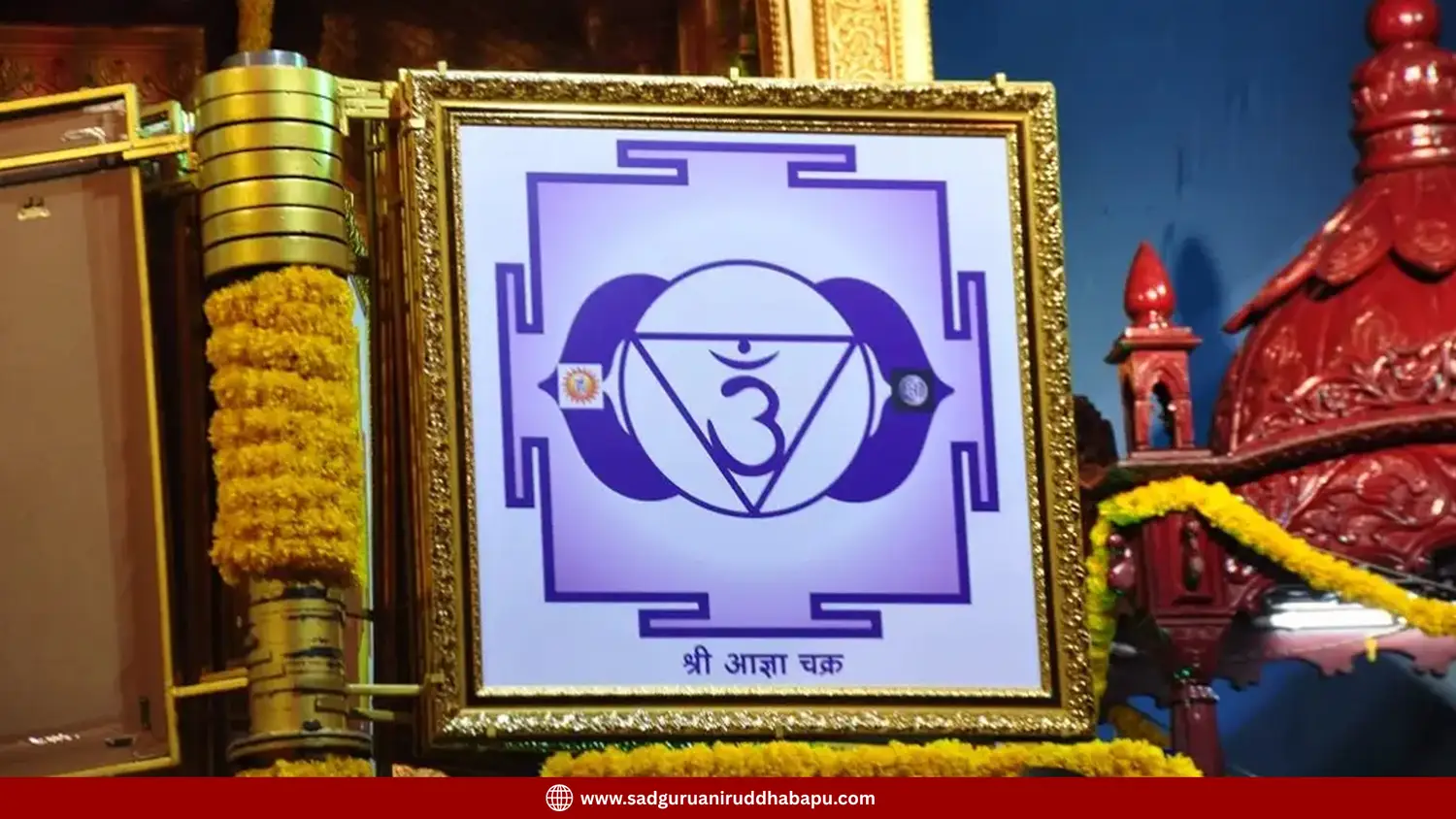
This wondrous stream was neither water nor an electrical force; it was a most beautiful, gentle, and peaceful light never seen before. Entering through the eyes of each Brahma-Guru, it flowed through the seventy-two thousand channels within their threefold bodies. Because of this light, every gross cell of their bodies became youthful, full of Oja, and pure, as did every particle of their mental substance.
Just then, in the voice of Lord Trivikram, the mantra “Om Shree Dattagurave Namah” reached everyone’s ears, and with it, what had been visible behind the eyelids became invisible again. The Brahma-Gurus did not open their eyes immediately—as if they were carefully storing within their threefold bodies that divine light they had received. The chant of “Shreedattagurave Namah” continued. Then Sage Agastya was the first to open his eyes; after him, one by one, all the Brahma-Gurus opened theirs.
Now all the Brahmarshi and Brahmavadini looked even more radiant, more youthful, stronger, and more powerful.
With a smiling face, Brahmavadini Lopamudra said to all: “Through the practice of the Shree Shambhavi Mudra, the gross body, the Pranamaya body, and the Manomaya body of every seeker remain ever renewed and fresh in this very way. However, where the light that issued from the Adnya chakra actually came from, that can be known only in the seventeenth and eighteenth step of the Shree Shambhavi Vidya.
Receiving the Shree Shambhavi Mudra from Sadguru Trivikram must be the supreme goal of every Shraddhavan across the chain of births; because once the Shree Shambhavi Mudra is received, suffering, fear, and affliction cease to torment, and however many crises may come, the devotee passes safely through them.
O dear Shraddhavans present, this eighth Navadurga, Mahagauri, is as compassionate as her other eight forms. Beloved ones, never fall into the error of weighing who among these nine is more compassionate or who is more potent. Though their pathways differ, their love, grace, and blessings are the same—because in the end these nine are one and the same Parvati.”
